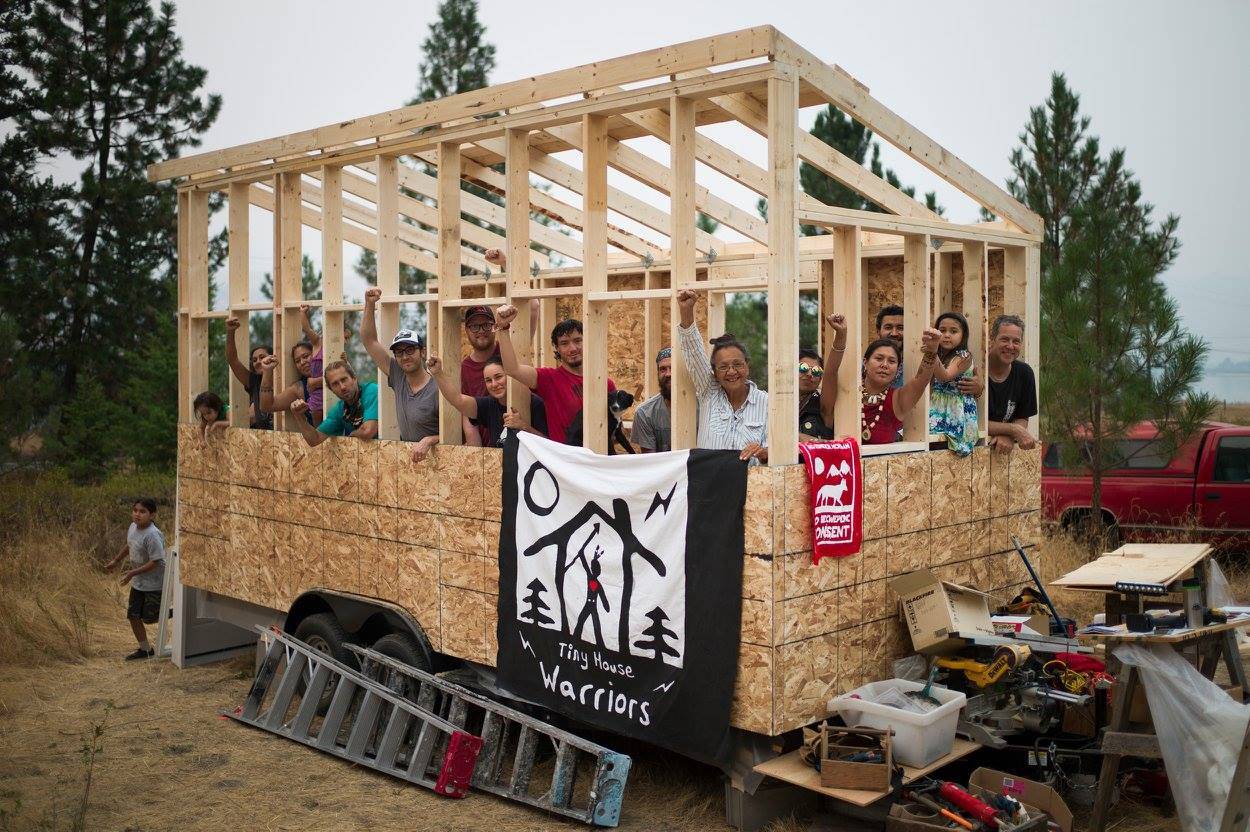Photo credit: Ian Willms
Boycotts, marches, strikes, petitions. Now you can add tiny houses to the list of nonviolent forms of protest.
Right now, all along a 518 km stretch of territory belonging to the Secwepemc nation, a grassroots group calling itself The Tiny House Warriors are building ten 144 square-foot houses. The houses, they hope, will stall or block the Kinder Morgan pipeline, which is expected to transport crude oil from Edmonton to Barnaby. To complete the pipeline, Kinder Morgan must cross the Secwepemc territory.
“We want to win this one,” says Kanahus Manuel, a Secwepemc member who is leading the group. “We want to stop it by any means necessary.”
Manuel grew up learning the Secwepemc history and culture from her father, a tribe leader, and Indigenous activist. Protest seems to be in her blood; last year, she stood on the front lines of peaceful protesters of the Dakota Access Pipeline in Standing Rock, North Dakota. She withstood the tear gas and rubber bullets fired by the police and returned home remembering foremost the small houses that lined the protest camps.
“I had this idea that through this tiny house movement, we can start creating homes and actually occupying places along the pipeline route to assert our authority and jurisdiction over the land, but also to blockade and stop this Trans Mountain pipeline from coming through our territory,” Manuel told HuffPost Canada.
The land in question has not been ceded; in other words, no treaties were made between Canada and the Secwepemc, and the latter nation did not give consent for the use of its land for the pipeline. Nevertheless, the federal government approved the pipeline route. This despite the fact that Justin Troudeau stated only last year that “no relationship is more important to our government and to Canada than the one with Indigenous peoples.”
The Indigenous peoples, led by Manuel, isn’t going to take it laying down. They’re going to provide housing to their people, right in the path of the pipeline. Manuel expects that this will escalate legal challenges and embroil the companies involved in safety issues.
Greenpeace has already openly supported the group, helping to pay for some of the lumber for the first house. Greenpeace climate and energy campaigner Mike Hudema commends the group for protesting the pipeline by providing housing for its people.
“Eventually these houses are going to be outfitted with solar panels, and so they’ll be producing the type of energy the world needs to see and hopefully they’ll be symbols of hope and resistance.”


